#((after the bela lugosi movie of the same name; and i enjoy some of his music))
Explore tagged Tumblr posts
Text
@beatingheart-bride
"I hope I didn't make you uncomfortable asking, Emily," June said gently, as she pushed her dinner around her plate (a part of her could hear her father admonishing her for it, but truthfully, she was much too nervous to think about eating), adding, "I just...well, it's like you said, you don't feel like you're over a hundred years old and, well...you certainly don't come across that way."
That night that she and Wilhelm kicked Emily out of the house (a night she continued to regret), her perception of the young woman had changed, going from a sweet, soft-spoken young lady her son was smitten with, to a manipulative monster looking to sink her teeth into Randall's soft flesh, and that image stayed with her long after that night...
...but now, in the gentle light of the kitchen, looking at her now, that familiar visage of a good-natured, gentle-hearted woman returned, though more tinged with melancholy, for reasons June now understood, and was sympathetic towards. She saw not a monster, but a very lonely soul, in need of love.
"Well, uh," Wilhelm commented, similarly eating little (despite his usually strong appetite, it was, like his wife's, waning this evening) as he took a stab at humor, joking lightly, "You look pretty good for a centenarian, lass!"
#((oh absolutely! i like his style; i like that he's a horror fan; enough to name his band 'white zombie'))#((after the bela lugosi movie of the same name; and i enjoy some of his music))#((like 'living dead girl' which was on the 'bride of chucky' soundtrack as part of tiffany's introduction))#((but...his movies are oftentimes just too nihilistic and mean-spirited for their own good!))#((and you're right; baby and otis are some of the most reprehensible and irredeemable out of the fireflies))#((and so it makes it really hard to root for them-honestly 'the devil's rejects' was a pretty damn good ending))#((to the firefly family; going out in a hail of bullets; and had it just been left as a duology with 'house of 1000 corpses'))#((i probably would've been fine with that; but still; rob zombie's movies are just a little too bleak for me!))#((i think in terms of the firefly trilogy; he took a lot of cues from 'texas chainsaw massacre'))#((and the sawyer clan; but like you said; the firefly family and their brutality puts ol' bubba and co. to shame!))#((i'm sure that's why he cast bill moseley; who was chop top in 'tcm 2' as otis))#((but while chop top was kinda funny in a very deranged way; otis doesn't have any of that))#((and i think rob could learn to include a little more levity into his films; to at least take the edge off a little!))#outofhatboxes#beatingheart-bride#V:Dark Shadows
6 notes
·
View notes
Text
My Five Top Dracula Comedies.
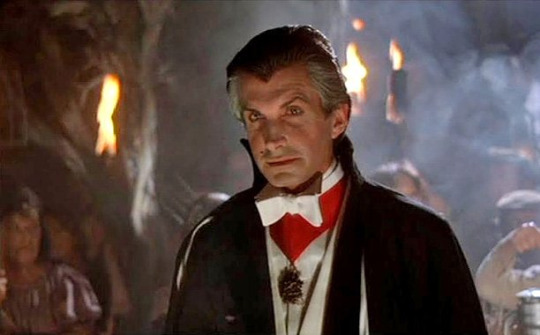
In 1897, Bram stoker wrote a novel about a Vampiric count who comes to England in search of fresh victims. The book revolutionized horror, and has been filmed several times. Some of the takes on the character have been comedies, and of those, I thought it might be fun to include the five I’ve enjoyed the most. I could have included Grandpa from the Munsters here, but the Munsters is deserving of it’s own blog, and I’ll cover them in the future. So with Halloween here, I thought I’d start with my favorite of them.
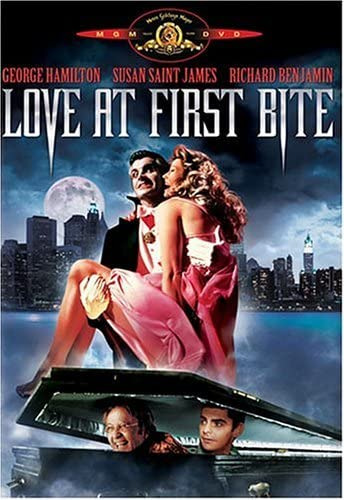
1. Love at First Bite (1979)
After “Young Frankenstein”, my favorite horror Comedy. In this comedy, George Hamilton plays a sympathetic Count Dracula, who is forced to come to America, when the Communist party, decides to turn his castle into a training camp for gymnasts.The film is perfectly cast. Artie Johnson is in top form as Renfield, and Richard Benjaman has never been better as Dr. Rosenberg-well it was Van Helsing, but the character said he changed his name for “professional reasons”. Susan St. James is funny as Dracula’s love interest Cindy Sondheim, a woman who is trying to accept being a liberated woman, but deep down wants an old fashioned love. This film is very funny, but also very politically incorrect. Like Blazing Saddles, this is the kind of film that could not be made today. Blacks, Puerto Ricans, Jewish people, and gays, are all poked fun of. We can’t have that today! Reeeeeee!

2. Abbott and Costello Meet Frankenstein (1948)
One of the best horror comedies ever made, this would mark a turning point for the Universal Horror films, when they went from serious to comedy, and then back again with sci-fy and the Creature of the black Lagoon series. With so many having experienced the actual horrors of war, the idea of the mad scientist creating havoc in his crumbling castle, was becoming quaint in comparison. Dr. Frankenstein had noting on Dr. Mengele.
A big reason this film works, is the monsters are allowed to be played seriously, and the comedy is largely left to the comics. We also have the return of Bela Lugosi as Dracula, which he still was in top form. He plays the count with gleeful evil, and it was good to have at last one more chance to see him as the Count.

3. Dracula Dead and Loving It (1995)
I have come to love this film, but when I originally saw it. I was expecting a Dracula comedy as funny as Young Frankenstein, or Love at first Bite. It was seeing it later on, and no longer expecting it to be as funny as Young Frankenstein, that I began to enjoy it as the comedy it was.
There is honestly a lot to love about this movie. It was deliberately filmed to look like the old sound stage bound horror films, everyone is putting on an exaggerated British hack-cent, except Leslie Nielsen, who is giving us his best Transylvania hack-cent. The sets look pretty good. Unlike Keannu reeves who struggled like an actor in a high school stage play portraying Jonathan Harker in Coppola’s “Dracula”, Stephen Webber looks like he’s having a fun time playing that same character. Peter MacNicol is hysterical as Renfield, While Harvey Korman bases his portrayal of Dr. Seward, who runs the sanitarium next to the ruined Carfax Abbey that Dracula purchased, on Nigel Bruce. This parody pretty much follows the famous Hamilton Deane stage play, that Lugosi’s version was based on, with nods to Coppola and Hammer tossed in.

4. Vampira (Old Dracula) 1974
This was a film I saw as a teenager, during it’s initial released, at the Eagle Rock Mall. I was a fan of David Niven, so I enjoyed it. David Niven is in fine form playing a sinister predatory vampire, who has found renting out his castle for tours, and “borrowing” blood from guests, has allowed him to enjoy a quiet life of no longer having to hunt for his food, and helps pay to maintain his castle, His only need at this point is to resurrect hi love, who has been in slumber for half a century. As Dracula, David Niven plays the part with his usual wit and elegance. Teresa Graves, plays the title role of Vampira, his mate that becomes black because of a blood transfusion, is also attractive and is a lot of fun in this film. I find the film is an entertaining 1970s British Horror film, but a lot of people find it disappointing, and some out right hate the film.
Part of this probably has to do with the marketing of the film in the States. Because of the popularity of “Young Frankenstein” some marketing genius thought it was a good idea to rename it “Old Dracula”. The half sheet poster I own even claims. “If you liked ‘Young Frankenstein’ you’ll love Old Dracula”. The two comedies represent different kinds of comedy films. If you liked Young Frankenstein, there’s a likelihood you wouldn’t like this film at all, and unlike Young Frankenstein, this film has gotten some hatred. But since I went into the film, to see a David Niven comedy, I wasn’t disappointed, and enjoyed my recent re-watch of this film.

5. Hotel Transylvania (2012)
It’s hard to believe that I would enjoy any film by Adam Sandler, but I found myself enjoying this film, and it’s sequels. It probably has to do with Sandler playing a very sympathetic Dracula, who wants to raise his daughter without putting her at risk from the humans who destroyed his home, and killed his wife, so I could genuinely enjoy the film. Adam Sandler brings along several of his friends (David Spade, Steve Buscemi Kevin James) to play the monsters, while Selena Gomez is good playing Dracula’s daughter “Mavis”. The film being direction by Genndy Tartakovsky, made it a very watchable film.
#Adam Sandler#Mel Brooks#Abbott and Costello#Dracula#David niven#Bela Lugosi#Dracula Dead and Loving it#Love at First Bite#Hotel Transylvania
11 notes
·
View notes
Text
BEASTARS SPECULATION #3: What’s in a name?*May contain spoilers*
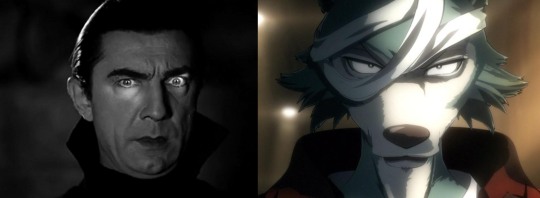
I have always liked coming up with names; whether they be for characters in a story, pets or giving suggestions to my siblings what to name their kids. A lot of the time, the choice of names have inherent meanings to the givers themselves. I myself was named after a character in a beloved Astrid Lindgren-story, which in itself could say something about my parents (either as big Astrid Lindgren-fans or just seeing a quality in the character they found intriguing).
As Shakespeare himself once wrote: “What’s in a name?”
In fictional works, characters more than often receive names that hint at their nature or some aspect of their personality, either ironically or poetically. Among others, several of these examples exist in the works of J.K. Rowling, such as with Albus Dumbledore, whose name is a linguistic conundrum. As detailed and lifted from https://harrypotter.fandom.com/wiki/Albus_Dumbledore:
“Albus could refer to bright, or white.
Albus may be the masculine form of "Alba", the Gaelic name for Scotland or an Italian word meaning "sunrise", possibly alluding to the rebirth symbols associated with him. It is also a Latin word for white, and thus could be meant to invoke Good as traditionally associated with white, or merely to refer to his long white hair and beard.
Dumbledore is an old 18th century English word for 'bumblebee'. It is still used in Newfoundland, Canada, to refer to a bumblebee. Rowling stated she imagined him flitting about the castle humming to himself”
Other examples would be in American superhero comics, where several characters, both heroes and villains, possess names that are practically puns waiting to be used for their costumed identities. Dr. Otto Octavius anyone?
Anyway, I bet you’re wondering at this point, what does all of this have to do with Beastars? Well, besides using this method itself with several of the characters in it, though quite sparingly and subtle (which one could argue emphasizes the characters for their personalites as a driving point in the plot as opposed to specific themes that they’re supposed to convey), I feel there’s a special case with Legosi.
As fellow cinephiles may recognize, Legosi’s name is a reference to Bela Lugosi (https://en.wikipedia.org/wiki/Bela_Lugosi), probably the most recognizable actor that has ever played the role of Dracula, which he did in the 1931-movie of the same name. This is interesting because it could have several inherent connections and meanings:
Both Legosi and the Count are essentially predators who tries their best to maintain a sense of humanity, but are occasionally overwhelmed by their rage and/or instinctive bloodlust. The difference though is that the human aspect is more of a facade for Dracula, enabling him continue living in modern society and satisfy his monstrous appetite without persecution, while Legosi genuinly doesn’t want to hurt people and desires to be strong enough to enable a peaceful life with the ones he cares about.
Both Bela Lugosi as Dracula and Legosi are naturally intimidating, but also charismatic. Though the difference there lies in their different kinds of charisma: Dracula is a man of the world, an aristocrat who is intelligent, charming and eloquent. Legosi on the other hand is well-meaning, honest and kind-hearted, but also an insecure and awkward introvert, making him hard to dislike once you get past his scary appearence.
Both Dracula and Legosi desires a member of the opposite sex, both in a complicated fusion of hunger and lust. Dracula’s desires are directed at Mina Harker (among others), while Legosi’s are directed at Haru. While the original Dracula from the book (and the 1931-movie) probably sees Mina as just another in a long line of conquests, later versions, such as the movie by Francis Ford Coppola, turns that desire into a more romantic direction, where the lonely vampire searches for a partner with which to break the insufferable loneliness that is coupled with his immortality. Legosi on the other hand is romantically and sexually interested in Haru, though they both admit throughout the series that it could have something to with an underlying instinct between the two where one wants to eat the other and the other get eaten. Not that they actually WANT it to go down that way, but in the same time, it is a danger they don’t think they can ignore. This sort of of link between Dracula and Legosi may be the most poignant, as Beastars really likes to associate the act of sex with the act of devouring (I am surprised DA hasn’t gone crazy yet).
Legosi’s actual father, Miyagi, is an actor, like Bela Lugosi was.
With that said, I move on to another side of the subject: The naming of fan-made children of interspecies couples. We’ve seen this in fanarts and fanficitons of other anthro-centric works of fiction, such as Zootopia and Aggretsuko, and Beastars is no different. Except, unlike the two previous two who either hasn’t acknowledged it or it simply isn’t a possibility, Beastars may the first one to canonically showcase that hybrids can be created between very different species (Though not really in a happy light so far, which could also be a subject for speculation at another time). Anyway, several artists online enjoy imagining what the hybrid children between Legosi and Haru would look like and be named.
I too have pondered a bit about this, and if I got to decide what to call them, I’d probably use the same kind of poetic irony of which I’ve talked about in the text above, either by considering their mixed nature or the names and personalities of their parents, not to mention their own personalites and appearences. As a cinephile, I’d probably find a way to reference another Universal horror-film actor from the old Hollywood-era, such as Boris Karloff (Frankenstein’s monster), Lon Chaney Jr. (The Wolfman) or Claude Rains (The Invisible Man).
Anyway, that’s what I’d do. How about you guys?
#haru#legosi#speculation#beastars#children#hybrid#what is in a name#bela lugosi#count dracula#universal monsters
3 notes
·
View notes
Photo



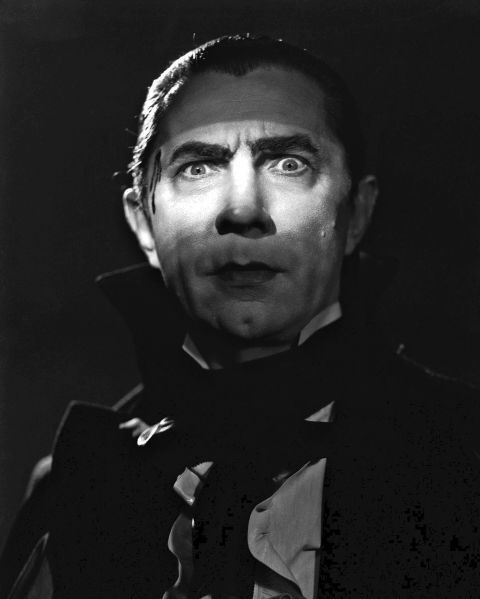


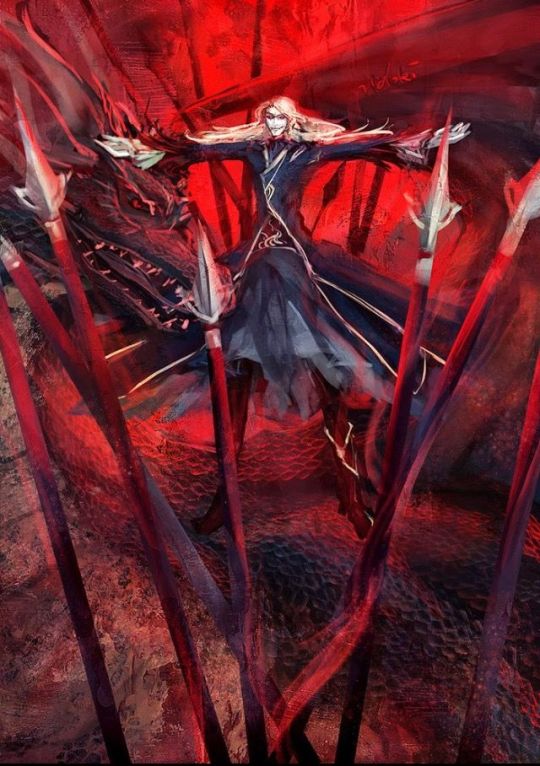

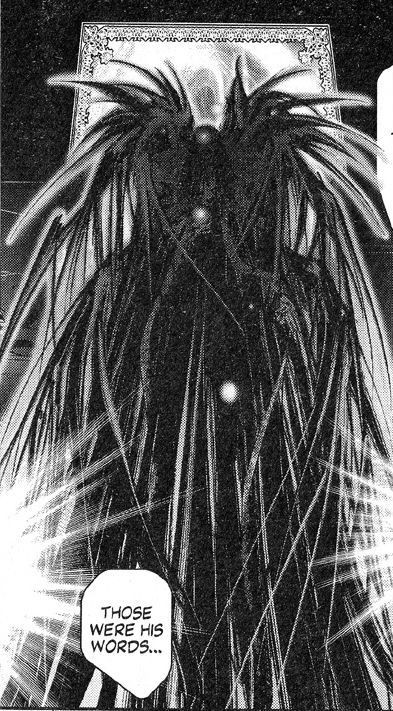

30 Day Monster Challenge 2 - Day #1: Favorite Dracula
1.) Castlevania’s Dracula
Iconic lines and wine tossing aside, Castlevania’s Dracula stands out in just how utterly villainous he is, while still blending class and a hint of tragedy into his character. He is bigger and grander than Stoker’s original vampire, and that is slowly leveraged into a broader cosmic role. Dracula in Castlevania is more than just a bad guy; he is the manifestation of evil on Earth. He’s comparable to the Antichrist, but even that kind of falls flat. An Antichrist is supposed to bring about an apocalypse or change; Dracula in Castlevania is presented as a moral necessity, a rebuttal to the post-modern death of a moral center. His presence is necessary for there to be good in the world. In the process, Castlevania’s Dracula has become the patron saint of the world’s monsters. Every kind of demon, fiend, boogeyman, freak, and specter are gathered into his lair and given a home and purpose.
And every now and then, not for too long, depending on the game, a bit of pathos peeks through and you’re reminded that there’s a man behind it all. It’s never enough to make you stop enjoying Castlevania’s Drac as a villain, but it makes you wonder if he could have been different. Is he bound to his role as the Prince of Darkness? Is it his curse, or does it give him power? To me, Castlevania Dracula is the summation of the character in media as he is now; as a man, as a monster, a villain, a tragic figure, and everything else.
2.) Dracula Classic
Over a century later, Bram Stoker’s original Dracula still confounds us and fascinates us. Every generation brings a new lense, a new reading to one of literature’s greatest monsters. He is an idea about superstition, about xenophobia, about masculinity, sexual deviancy, disease, poverty, degradation, and so on and so on for as long as there are people who can read. For all the grandiosity of the other Draculas on this list, Stoker’s still has an air of realism to him, a banality that makes his horror human. Maybe Dracula classic can’t shapeshift into a dragon or summon an army of spears, but his power is more than enough to eclipse the Victorian Enlightenment. Stoker’s characters are human; doctors, lawyers, teachers, a... cowboy, so it only takes a little bit of inhuman evil to remind the reader of how fragile we and our society really are in the face of the unknown.
3.) Christopher Lee
Moving on into the live actors portion, you gotta’ give it up for THE KING. Lee’s Dracula was the first to go beyond horror into terror; that quickened, gut-wrenching primal scare. He was fast, he was bloody, he was dangerous, and still classy as all hell. The Emperor of Metal planted his roots by starting out as The Prince of Darkness. If I had one complaint, it’s that Lee doesn’t really come off as convincingly Transylvanian; Lee’s pretty clearly British, and the closest he’s ever been to being Slavic was that time he played Rasputin. Christopher Lee didn’t die in 2015; he’s just practicing for when the world needs Dracula again.
4.) Bela Lugosi
But you have to give props to the original. It’s hard to believe now that anyone ever found Lugosi’s Dracula scary, but I still remember my dad and older horror buffs talking about how they had nightmares after seeing Lugosi’s Dracula, or were afraid that he was lurking in the dark when the lights went out. What gets me is just how enmeshed with the role Lugosi was. Bela Lugosi was Dracula, no doubt about it. Other men can fill the role, but Lugosi embodied the character. Most actors don’t star in as many movies as Bela Lugosi starred as Dracula. When he died at a ripe old age, he was laid to rest in his cape and amulet.
5.) Duncan Regher
Every actor brings something to Dracula. Lee brought terror and nobility, Lugosi brought charisma and otherworldliness. Regher? Regher brought pure villainy. The Monster Squad is a gem of 80s monster nostalgia. Regher’s Dracula is a hybrid of Lee and Lugosi, blending sheer evil with overwhelming presence. Regher’s performance is a treat, drawing from that same well of post-Darth Vader villainy that brought us Frank Langella’s Skeletor and James Earl Jones as Thulsa Doom; the kind of guys that could convince you to carry them to the moon and be happy about doing it. Also, and I feel this detail to the lore cannot be overstated enough; Dracula-mobile.
6.) Richard Roxburgh
No, this is just a guilty pleasure. Van Helsing is a guilty pleasure. Get used to this, because I love this dumb movie. Roxburgh doesn’t bring anything to Dracula as a character except camp. Cheesy, cheesy camp. Roxburgh’s Dracula is like some unholy hybrid of Bela Lugosi and Tommy Wisseau. He has two emotional ranges, and they are both over-acting. But I can’t not love this Dracula; he takes a lower place because... come on, but he still makes my list.
7.) Fate/Apocrypha
The brief anime portion of this list starts off with Fate/Apocrypha. It’s actually a little disingenuous to call Fate’s Dracula by that name since he insists on being called Vlad Tepes III. I mean one look at his character design next to Castlevania’s Dracula tells you everything you need to know, but it’s still an important distinction. In Fate, Vlad recalls how he is a hero in Romania, a champion of his church and land, noble scion of the house of the dragon. While actually in Romania, Vlad’s power becomes near god-like. It offers an interesting reminder that Vlad Tepes was a real man, and is still viewed as a Romanian folk hero, even after he has become intertwined with Dracula. But because characters in Fate are composed of how they are perceived through time, Vlad can still become a vampire. And, frankly, I’d be lying if I said it wasn’t worth it when he finally does turn.
8.) Alucard
The quintessential anime Dracula. I’m putting him beneath Fate’s though because, well... Hot take, but Alucard isn’t much of a Dracula. He’s a vampire monster, but he’s mostly just a kind of edgy antihero with a Dracula underlay. Every now and then something resembling Gary Oldman’s Dracula pops its head up and offers a bit of pathos, especially towards the end of the series. But what Alucard lacks in substance, he makes up for in style; it’s not every Dracula that kills Nazis by bombing themselves from an airplane only to sail back to London to a fairly effective quotation of the original novel.
9.) The Sacred Ancestor
We’re now in legendary Dracula territory; Draculas who lose some points because they don’t make an actual appearance in their series, but still have an impressive presence. It’s never overtly stated that the Sacred Ancestor in Vampire Hunter D is Dracula, but the reader can put two and two together. D’s dad might just be the most powerful Dracula on this list; his powers are nothing short of god-like, and he single-handedly led the Nobility in conquering the world. And yet, from the first novel, there’s an arc present; a Dracula who achieves vampire supremacy, then gains a conscience. What’s left is a mystery that strings the reader and D along through all the novel, presenting a Dracula simultaneously ruthless, brilliant, nurturing, and regretful.
10.) “Someone worse than me.”
You never meet Dracula in The League of Extraordinary Gentlemen. The closest you ever get is a hallucination Mina has in 1969. It’s presumed he’s dead since League is following the novels. But every now and then you’re reminded of his presence through Mina, and the picture she paints is a being of absolute and horrible evil. You already know Mina’s story, but she’s such a strong character in League that you can only begin to imagine what Dracula must have been like. Dracula in League is a trauma, a scar, and like Mina you both dread and hope that you never meet that horrible and beautiful man ever again.
#30 Day Monster Challenge 2#Dracula#vampires#vampire#horror#castlevania#fate series#hellsing#vampire hunter d#the league of extraordinary gentlemen#30 Day Monster Challenge#long post
104 notes
·
View notes
Text
Extraordinary Tales

I was browsing Netflix for some horror or halloweenish things to watch this season, when I stumbled across Extraordinary Tales, an anthology film with segments based on the works of Edgar Allen Poe. I don’t consider myself a fan of Poe’s work, but it was always a pleasure when I had to read his stories for class. So I turned it on and...oh my god.
Animation people, why aren’t we talking about this?!
This was fuckin’ gorgeous! Incredibly haunting and disturbing, yes, but gorgeous!
Each segment has its own unique style, and each one is narrated by a different person.
I’ll just go through one by one.
0) Poe and Death

To start, the thing that connects these shorts together. We see a raven flying around a cemetery, whom we learn is Edgar Allen Poe. He has a converstaion with the personification of death, who says he’s obsessed with her. Each story is being retold as Poe tries to show his writings were more than just love letters to death.
1) Fall of the House of Usher

This story is narrated by the late great Sir Christopher Lee. I will admit, I’m not super familiar with this story (I read it for class, but I’ve slept since then), but nevertheless the presentation in this story is amazing. It has an almost Burtonesque look to it, and you can see the cracks in the building grow larger as the story progresses. Also, the narrator reminds me of human Blinky from Trollhunters. I don’t know why.
2) The Tell-Tale Heart
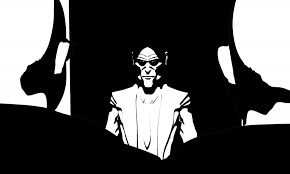
Now this story I do remember. I read it in 9th grade, and it’s a chilling story I never forgot. It’s probably my favorite story from Poe. And this short has reignited the fear the original story stoked into me. Using archival audio, the segment is narrated by Bela Lugosi (If you don’t recognize his name, he’s best known for his role as Dracula in the 1931 film of the same name). This audio is not digitally restored in any way, so it sounds crackily and warped with age. And his narration paired with the visuals is incredibly unnerving. The short is mainly in black and white with no blending. The only other color used is red, and even then it’s used very little, it never fills the screen. This makes the short even more creepy looking. The Old Man, even though he’s the innocent victim in all this, is terrifying to look at! He’s really creepy! It’s just all around creepy, and it’ll probably keep me up tonight.
Speaking of keeping me up tonight...
3) Facts in the Case of M. Valdemar
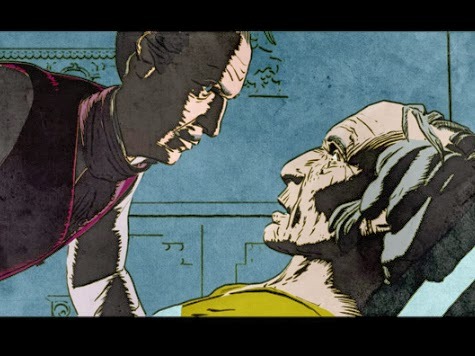
...This will also haunt my nightmares! I had never heard of this Poe story before, it feels more like something Mary Shelley might’ve wrote! This segment is narrated by Jullian Sands (whose most notable movie from what I can see is Arachnophobia). The style takes after comic books, almost reminiscent of the animation used in Telltale’s games (ah hah, Edgar Allen Poe, Telltale, hardee har). The narrator of the story is very obviously modeled after the late Vincent Price, which made me wish he was the narrator. I mean, there’s so many recordings of Vincent Price reading Poe’s stories that they could’ve had him narrate one of these segments (I distinctly remember hearing him read Pit and the Pendulum while on a road trip, but I’ll get into that later...) But, for what we got, Sands is a pretty good narrator. This was my first time hearing this story, so I was not prepared for what was in store. Monsieur Valdemar’s lifeless body acts like it’s in the Exorcist (minus the crucifix masturbation, spider walk, 180 degree head turn, and the pea soup). And did you think the way Magica possed Lena in DuckTales ‘17 was disturbing? Oh ho! take that, ramp the graphicness of it up to 11 and you get what happens after Valdemar is snapped out of his “trance”. It is horrifying!
4) The Pit and the Pendulum

This is the only segment that tries to look realistic. The other segments go for more stylized looks, which are incredibly affective. This one looks like a video game. I’m not saying it’s bad, that’s just what it reminds me of. Anyway, this story is narrated by Guillermo “Where’s-My-Haunted-Mansion-Remake” Del Toro, which is good casting. The story takes place during the Spanish Inquisition, so his accent helps illustrate that. I didn’t even know this story took place during the inquisition, I only heard Vincent Price narrate part of it during a family road trip. I don’t remember if I plugged in my headphones and zoned out or if I asked my dad to change the station (random fun fact: I’m really unnerved by audiobooks and radio dramas. It doesn’t matter if the story is funny or not, they creep me out. Probably stems from a creepy audiobook we listened to in elementary school or my dad listening to disturbing radio dramas late at night during long road trips) Only thing that doesn’t work is that Del Toro’s words don’t match the visuals. He says that following the wall didn’t help him figure out his surroundings, but the visuals show him looking out a barred window. How did that not help you figure out your surroundings? I think this short might’ve benifited from cooler colors. The story is meant to take place in a dark cell, the narrator can barely see anything. The animation is very red in this segment, not conveying this sense of darkness we should be feeling. It only goes to blues and cooler colors when night falls, but I think it would’ve been better if the rest of the short was like that.
5) Masque of the Red Death
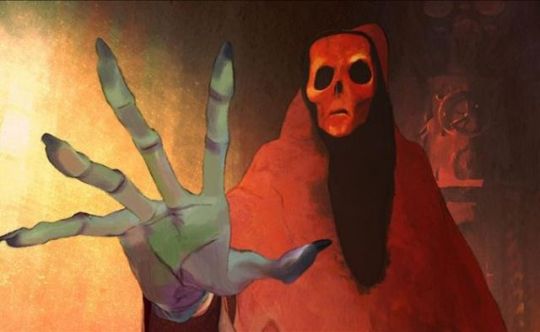
The final segment of the film. This one is unique from the other ones because it has no narrator. There are only two lines said in this short (one spoken by Roger Corman), the majority is told visually. And...I don’t think it works very well...? I have never read this story, the most I know is that it’s about the Plague and that the Phantom of the Opera has a killer Red Death cosplay. You kinda get what’s going on...? The poor are dying from the plague, the rich are hiding behind a wall to keep them from getting infected, but the Red Death gets in and kills everyone. Most of the short is just watching these people party. It’s like you’re the only sober person at this shindig and you’re antisocial as fuck (so... in my case, real life). It doesn’t get interesting until the Red Death shows up, then it’s like Oprah. “You get the plague! And you get the plague! EVERYBODY GETS THE PLAAAAAAGUE!!!” And then, it ends. Uhh, okay?...what was I suppose to gain from that? I mean, the animation is pretty, made to look like a painting. But outside of eye candy, what else is there...? Maybe if I read the story, this would make more sense to me and I wouldn’t be so harsh towards it, but a film should be able to stand on its own. I shouldn’t have to read the story to understand what’s going on, that’s your job! You’re suppose to tell the audience the story! Not rely on them to have done their homework that they didn’t even know was assigned! That’s basically how this last segment felt; it felt like when I forgot to do the reading assignment for class and the teacher starts discussing it like everyone has read it, while I’m sitting there going “...whut...?”
Conclusion
This was a mixed bag for me. The segments were either hit or miss, but the ones that hit, hit really damn hard. And even the ones that miss still had some redeeming qualities, whether it was the animation or the narrator.
If I had to rank the segments from my favorite to least favorite, it’d be like this;
😄Tell-Tale Heart
🙂Facts in the Case of M. Valdemar
😐Fall of the House of Usher
😕Pit and the Pendulum
☹️Masque of the Red Death
Maybe my opinions would be different if I had read all these stories prior to seeing this film, but as someone who’s only dabbled in Poe’s work for school, I still really enjoyed this. I mostly appreciate it as a fan of animation. Each segment does something different, giving each story a unique style.
If you’re looking for a macabre film to watch this Halloween, give Extraordinary Tales a watch...
...just make sure you do so with the lights on...
...Goodnight, and pleasant dreams...

#film review#opinion warning#extraordinary tales#edgar allan poe#fall of the house of usher#tell tale heart#facts in the case of m valemar#pit and the pendulum#masque of the red death#halloween
25 notes
·
View notes
Text
THE CARTERS MEET FRANKIE AVALON
S6;E11 ~ November 19, 1973
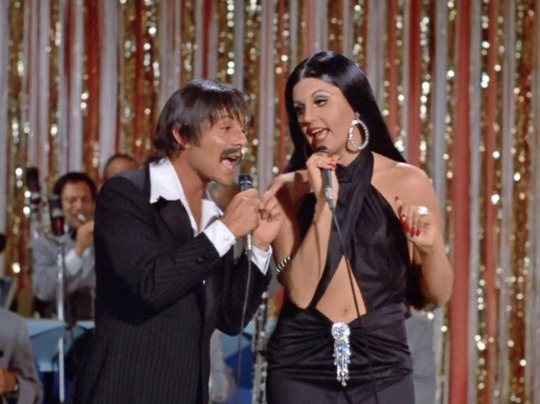
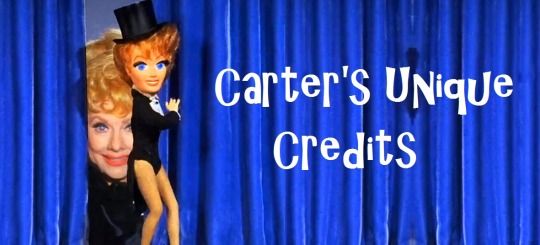
Directed by Coby Ruskin ~ Story by Fred S. Fox and Seaman Jacobs, Teleplay by Bob O'Brien
Synopsis
Lucy, Harry and Kim go to see Frankie Avalon perform and Kim is chosen from the audience to sing with him on stage. This leads to her performing in the nightclub's talent competition as Cher, with Avalon as her Sonny.
Regular Cast
Lucille Ball (Lucy Carter), Gale Gordon (Harrison Otis Carter), Lucie Arnaz (Kim Carter)
Guest Cast
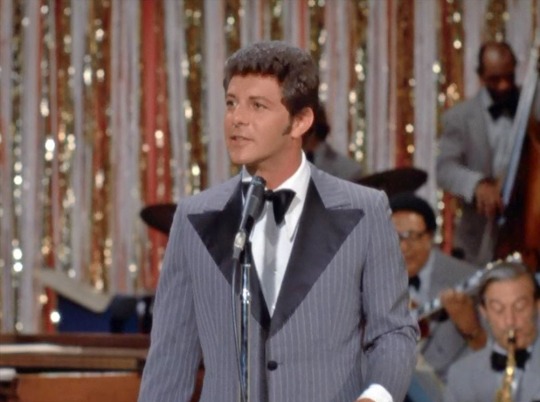
Frankie Avalon (Himself) was born in Philadelphia in 1939 as Francis Thomas Avallone. A recording star and musician, Avalon’s movie career took off when paired with Annette Funicello in Beach Party (1963) and its string of sequels. He played Teen Angel in Grease (1978) and considers “Beauty School Dropout” to be his most popular song. He previously played Tommy Cheever (Bank president Mr. Cheever's son) in “Lucy and the Starmaker” (TLS S6;E4) on “The Lucy Show” in 1967.
Vic Glazer (Vic, Conductor / Pianist) enjoyed a long career as an accomplished arranger, composer, pianist and Music Director for many well-known entertainers, which included long stints as Musical Director for Debbie Reynolds and Frankie Avalon. He traveled the world for his work, and made two appearances at The White House during the 1960s.
Sid Gould (Maitre D') made more than 45 appearances on “The Lucy Show,” all as background characters. This is one of his nearly 50 episodes of “Here’s Lucy.” Gould (born Sydney Greenfader) was Lucille Ball’s cousin by marriage to Gary Morton.
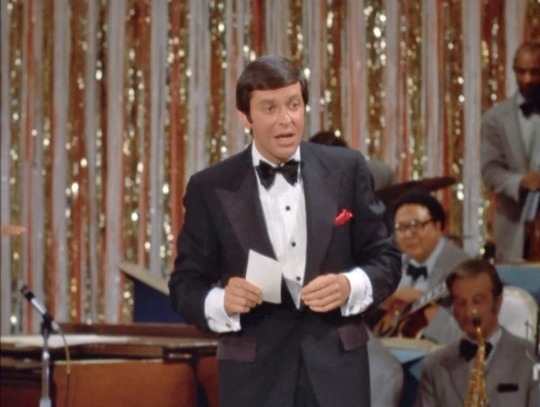
Jerry Fogel (Mr. Collins, Wilshire Room Entertainment Director and Emcee) is perhaps best remembered as Jerry Buell on “The Mothers-in-Law” (1967-69), produced by Desi Arnaz. He was also a semi-regular on “The White Shadow” (1977-78) as Bill Donahue. This is his only appearance with Lucille Ball.
Lucy says his name aloud in the dialogue, although he is listed simply as “M.C.” in the final credits.
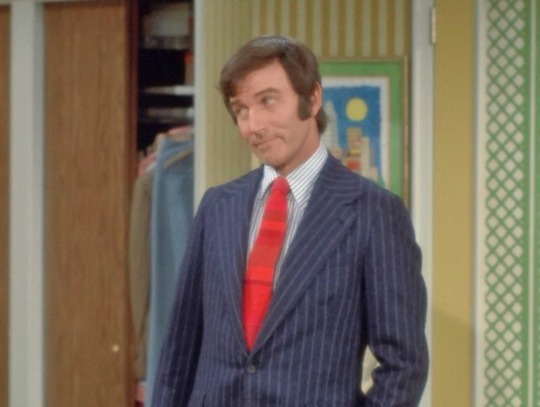
Robert Hogan (Jack Lucas) played the Reverend Tom Winter on TV's “Peyton Place” (1968-69) and was the inspiration for the naming of the title character on “Hogan’s Heroes” (1965-71). His screen career began in 1961 and he previously appeared as Captain Perry in “Lucy and the Astronauts” (S4;E5).
Jack is Avalon's agent. Although his surname is never spoken in the dialogue, it is listed in the final credits.
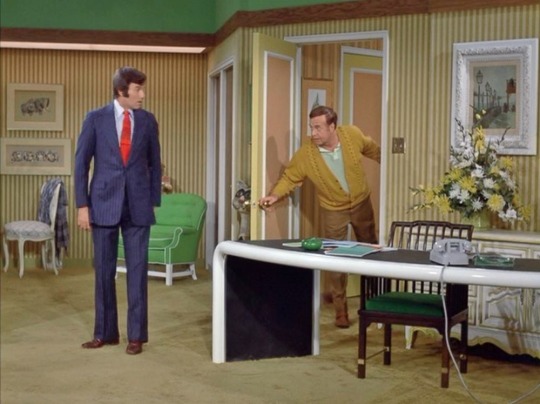
Bob Whitney (Call Boy) appeared with Lucille Ball in The Facts of Life (1960). This is the fourth of his five appearances on the series.
In this context, a “Call Boy” is a person who gives the star his “calls” (“10 minutes,” “5 minutes,” “You're On.”) while they are in their dressing room.
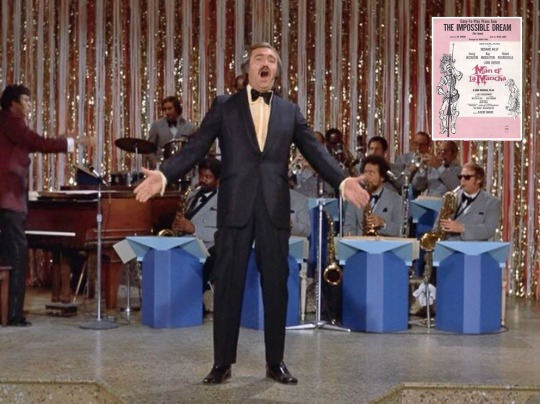
Bill Lee (Talent Competition Singer) frequently dubbed the singing voices of non-singing film actors such as John Kerr in South Pacific (1958), Matt Mattox in Seven Brides for Seven Brothers (1954), and Christopher Plummer in The Sound of Music (1964). This is his last screen credit and one of his few on-camera roles.
Marl Young (Talent Competition Conductor / Pianist, uncredited, above left) was the “Here's Lucy” musical director and often appeared on camera when episodes included music.
Avalon brings his own musical director, Vic Glazer, for the first part of the show, his nightclub act, but “Here’s Lucy” musical director Marl Young takes over for the Talent Competition at the end.
Shirley Anthony (Audience Member, uncredited) makes the eighth of her 13 appearances of “Here’s Lucy.”
As the episodes opens (and the blue curtain in the title parts) Anthony is the very first person on camera, sitting in profile.
George Holmes (Audience Member, uncredited) was previously glimpsed in the studio audience in “Lucy and Art Linkletter” (TLS S6;E4). He also did three films with Lucille Ball: The Facts of Life (1960), Critic's Choice (1963) and Mame (1974).
Other audience members and the onstage musicians are played by uncredited background performers.

This is one of a very few episodes to have both a “story by” and “written by” credit for the writers.
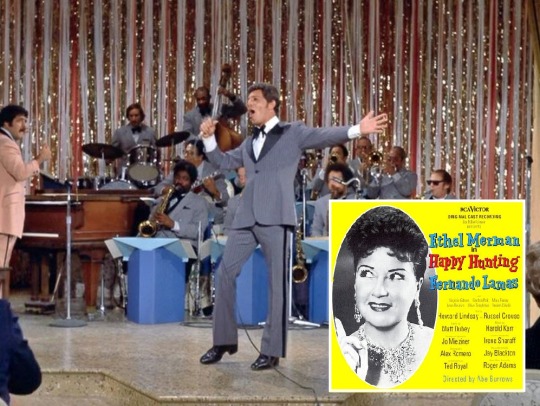
The episode opens at the Wilshire Room nightclub where Avalon starts his show with “It's Good to be Here” written by Harold Karr and Matt Dubey for the 1956 Broadway musical Happy Hunting starring Ethel Merman.

Bringing Kim on stage, they sing "Can't Take My Eyes Off You" to each other, a 1967 song by Frankie Valli and Bob Gaudio of The Four Seasons. The song earned a gold record and reached #2 on the Billboard Hot 100 for a week. It is now part of the juke box musical Jersey Boys (2005).
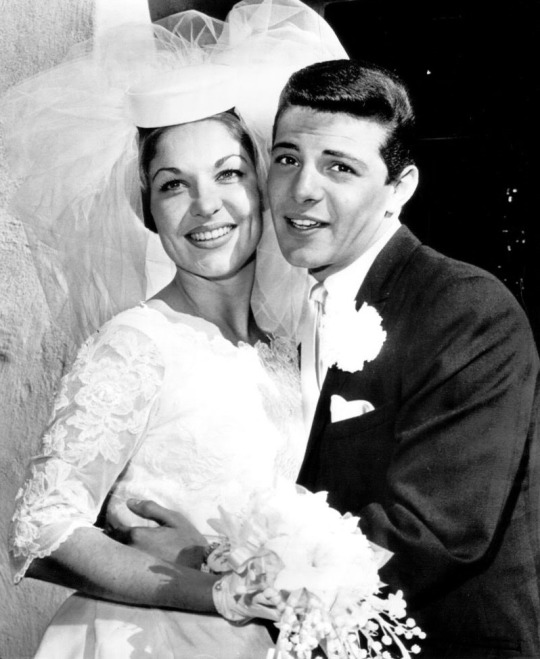
Avalon says he has seven children (with another on the way) and is married. He later says his wife's name is Kay. Mrs. Avalon was born Kathryn ‘Kay’ Diebel. A former beauty contest winner, they were married in 1963.
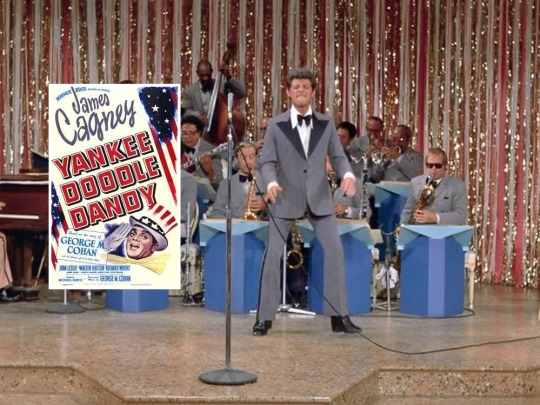
The band plays a brief fanfare based on “Hooray for Hollywood,” a song by Richard A. Whiting first featured in the 1937 film Hollywood Hotel. It launches the portion of Avalon's show where he does impressions of famous actors auditioning for the role of George M. Cohan in the film Yankee Doodle Dandy. Naturally, the audition song is “Yankee Doodle Dandy,” from Cohan's hit Broadway musical Little Johnny Jones (1904).
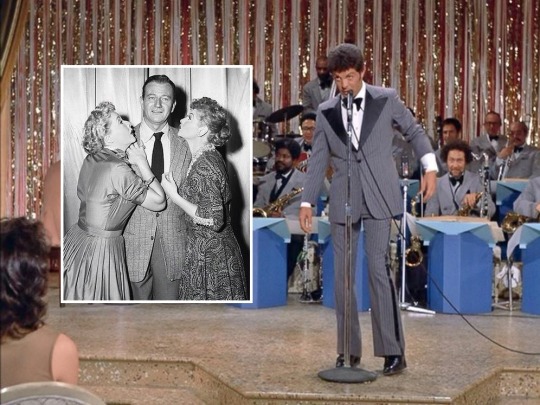
Avalon first does an impression of John Wayne (1907-79), who was a guest star on both “I Love Lucy” and “The Lucy Show.”

He then does his impression of Bela Lugosi (1882-1956) in which his idea of dancing is flapping his arms like bat wings. Lugosi's iconic character, Dracula, was humorously presented on “The Lucy Show.” Finally, Avalon imitates James Cagney (1899-1986), who actually played the role and earned an Academy Award for the film. Kim did her own quick impression of Cagney during “The Hollywood Unemployment Follies” (S3;E22).

When Lucy says she has a son, Avalon wonders why he can't play Sonny to Kim's Cher. Lucy explains that he is too tall. Ironically, Harry called Kim and Craig ‘Sonny and Cher’ in “Lucy Stops a Marriage” (S3;E16) three years earlier. Lucy never uses Craig's name, however, or mentions where he is.

Before Avalon and Kim take the stage as Sonny and Cher in the talent competition, an unnamed singer (Bill Lee) finishes up the last few bars of “The Impossible Dream,” a song written by Mitch Leigh and Joe Darion for the 1965 Broadway musical Man of La Mancha, which was filmed in 1972. The singer makes the applause meter hit 89.

Sonny and Cher were a pop music duo, actors, singers and entertainers made up of husband-and-wife Sonny and Cher Bono in the 1960s and 1970s. They also had two top ten TV shows, “The Sonny & Cher Comedy Hour” (1971-74) and The Sonny & Cher Show (1976-77). The couple's career as a duo ended in 1975 following their divorce. In the decade they spent together, Sonny and Cher sold over 40 million records worldwide. They had one child together, Chaz Bono, who was born Chastity Sun Bono in 1969. Sonny Bono left show business for politics and died after a skiing accident in 1989. Cher, who has won an Oscar, Emmy, and Grammy, has continued her career as a superstar solo act.
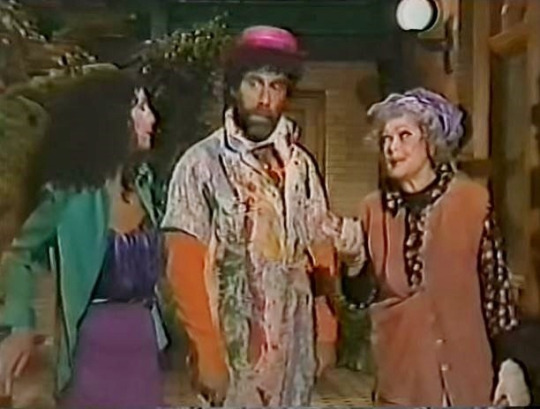
Cher and Lucille Ball appeared on an Emmy-nominated special together in 1979.

Frankie Avalon and Lucie Arnaz actually went to see a taping of “The Sonny and Cher Comedy Hour” the week before they shot this episode in order to get some pointers. Cher loaned Lucie the wig, the earrings, and a pair of her eyelashes for the episode.
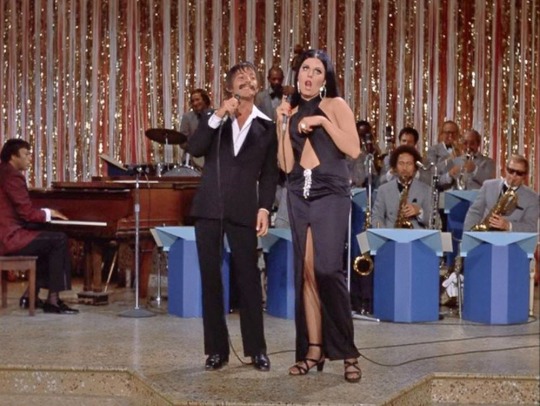
Frankie and Kim sing “I've Got You Babe” written by Sonny Bono in July 1965. The song became their signature song as a duo. The original version spent three weeks at #1 on the Billboard Hot 100 selling more than 1 million copies and certified Gold. Avalon and Arnaz sang to a prerecorded track.

Mid-song, ‘Sonny and Cher’ (aka Avalon and Arnaz) break into comic banter just as they often did on their TV show. One joke references “Gunsmoke,” a TV western that aired just before “Here's Lucy” on CBS. The show was on television for two decades (1955-75), after two years on radio. After two years on radio, Lucille Ball also moved to television for a career that spanned from 1951 to 1986.
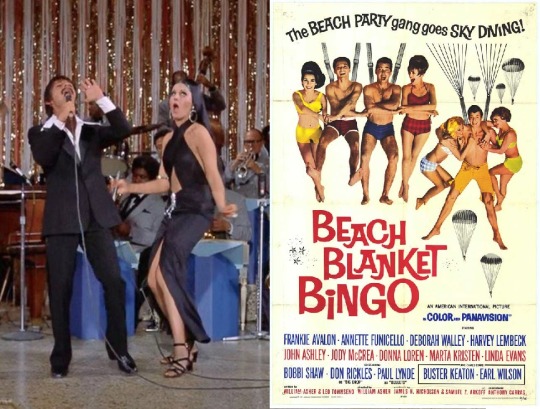
When Kim and Avalon win the talent competition with a record-high score of 97, Avalon launches into a chorus of “Beach Blanket Bingo” by Guy Hemrik and Jerry Styner, written for the 1967 film of the same name. Coincidentally, the film was written and directed by William Asher, who also directed 102 episodes of “I Love Lucy.”
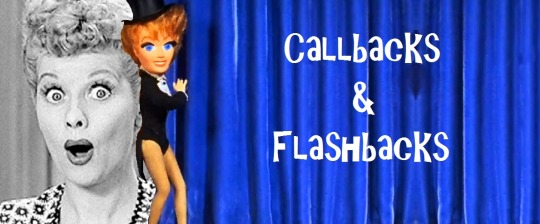
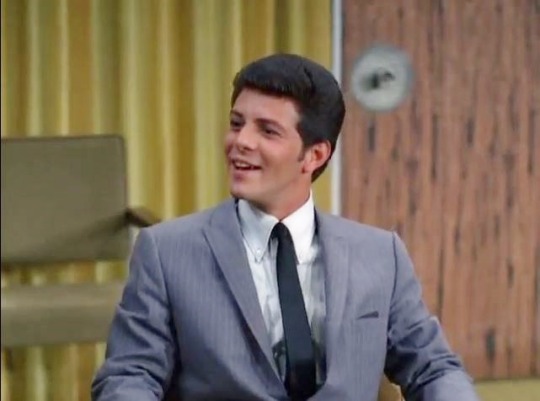
Frankie Avalon played a young man who was torn between banking and singing in “Lucy and the Starmaker” (TLS S6;E4) until Lucy Carmichael comes to his rescue.

Cher's mother, model and actress Georgia Holt, was one of the two models wearing the Jacques Marcel “potato sack” dresses in “Lucy Gets a Paris Gown” (ILL S5;E20, inset). Ten years later, she modeled fur coats for Lucy Carmichael in “Lucy and Pat Collins” (TLS S5;E11).
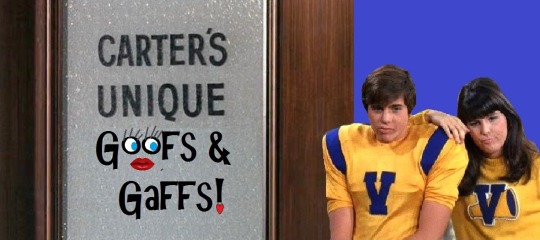
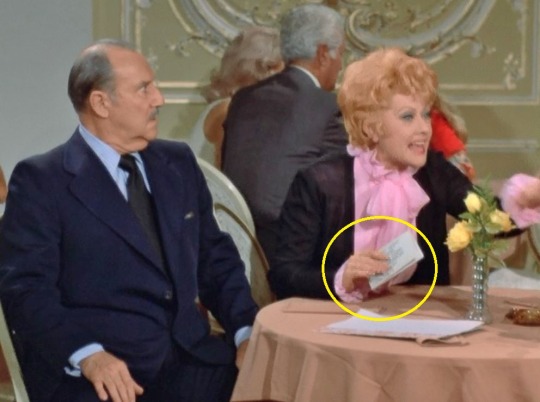
Distraction Action! Lucy keeps absentmindedly fiddling with the table card in the Wilshire Room. She even starts gesturing with it in her hand.
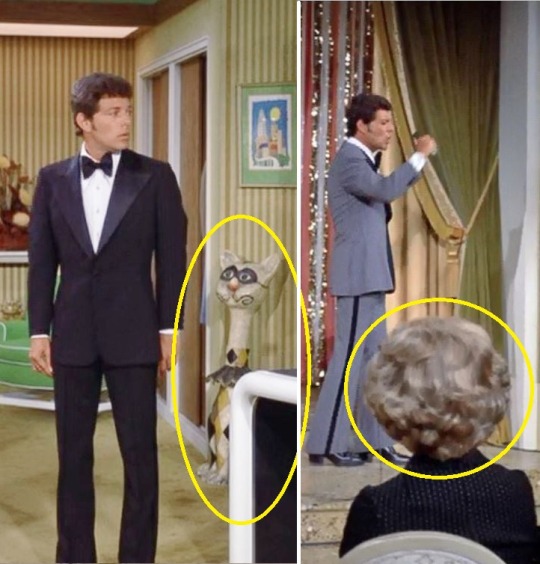
Eye Catching! Not exactly a goof or a blooper, but sometimes production design can upstage the action, which is the case with this woman’s HUGE grey wig and this equally HUGE ceramic cat!
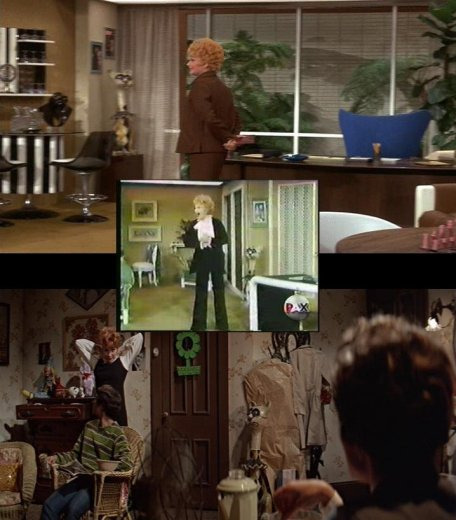
The crazy cat was first glimpsed in Flip Wilson’s office in “Lucy and Flip Go Legit” (HL S4;E1) and also (bottom photo) in Shirley MacLaine’s apartment in the Universal film Sweet Charity (1969).

“The Carters Meet Frankie Avalon” rates 3 Paper Hearts out of 5
Who knew that Frankie Avalon was such a talented impressionist? This episode showcases his talents well. Avalon and Lucie Arnaz do a spot-on impression of Sonny and Cher, the main attraction of this episode where Lucy is more background than star.
#Here's Lucy#Lucille Ball#Gale Gordon#Lucie Arnaz#Frankie Avalon#Sid Gould#Shirley Anthony#Coby Ruskin#Fred S. Fox#Seaman Jacobs#Bob O'Brien#Vic Glazer#Jerry Fogel#Robert Hogan#Bob Whitney#Bill Lee#Marl Young#George Holmes#Get It's Great To Be Here#Can't Take My Eyes Off of You#kathryn diebel#Horray for Hollywood#Yankee Doodle Dandy#Bela Lugosi#John Wayne#James Cagney#The Impossible Dream#Gunsmoke#I've Got You Babe#Sonny and Cher
1 note
·
View note
Note
What is the best vampire movie you have ever seen? I am in desperate need of some good ones to quench my thirst. Lol I apologize for that joke XD
Hehe. I love the pun. I like cheesy things.
1. Dracula (1979 version). This version of Dracula is one of the few romantic incarnations of Dracula that still seems to enjoy what he is and isn’t suicidal. I chose to believe he faked his death at the end. Also the Mina character (renamed Lucy) is delightfully aggressive and Laurence Olivier plays a fantastic Abraham Van Helsing.
2. Bram Stoker’s Dracula. Though this version is more faithful to The Dracula Tape by Fred Saberhagen than it follows Bram Stoker’s novel it’s the only version to leave Quincey Morris in tact and still the most faithful film adaptation to date despite the added love story between Mina and Dracula. And that odd origin story they gave for Dracula’s vampirism.
3. Dark Prince: The True Story of Dracula. This film can be found on Youtube for free. It stars Rudolf Martin, who also played Dracula in the Buffy The Vampire Slayer episode Buffy vs. Dracula. It’s surprisingly respectful to the history while also implying Vlad the Impaler became the famous vampire after death and actually works as a very good prequel to most recent (within the last thirty years) adaptations of Dracula.
4. Fright Night (original 1985 version). If you love eighties music, traditional vampires, and loving homages to classic Hammer Horror and Dark Shadows I strongly recommend this movie. You don’t see too many serious modern vampires able to turn into a bat, wolf, or mist anymore and it’s just a fun movie. Also Roddy Mcdowell played Peter Vincent (a sweet homage to both Peter Cushing and Vincent Price) masterfully. You see excellent and well portrayed character growth and I highly recommend it and even it’s 1988 sequel, Fright Night: Part 2. I miss the traditional vampire powers to summon storms and change form into a bat, wolf, or mist and age and de-age at will and most of those lost powers make an appearance in this movie but not in the 2011 remake which lacks heart and passion on the part of the film makers behind it.
5. Lost Boys. Much like Fright Night this is a fun eighties movie. Like Fright Night it has an excellent soundtrack and humor with the horror. The sequel’s not very good but the third one is decent. Not as good as the first but decent.
6. Interview with the vampire. Despite what Anne Rice hopes I doubt she will ever be able to make a better film adaptation of the original source material than this movie and it’s a shame that a version of The Vampire Lestat was never made by the same people. If you can find it the San Francisco (NOT the New York) adaptation of the Lestat musical actually works pretty well as a direct sequel. The San Francisco version of the Lestat musical was never officially released to video but there is a good quality bootleg out there.
7. Let the Right One In. An eerie and beautiful platonic love story between a boy and a vampire. The film is adapted from the novel of the same name. Also it’s far better than it’s awful American remake.
9. The vampire Lovers. Despite deviations from the novel and two character name changes this is still a far better adaptation of Carmilla than many other film versions and it does capture the atmosphere and ambiance of the original novel, something few adaptations seem to manage.
10. Demon Under Glass. This one is extremely low budget. It’s so low budget it might as well have been filmed in someone’s basement however it has a very clever premise and a tie-in novel (with twice the plot) by the woman who wrote the script. It deals with what happens when a kindly doctor is roped into working with the government in regard to studying a captured vampire.
11. Scars of Dracula. This was Christopher Lee’s favorite Hammer Dracula movie to work on and you can tell.
12. Nightbreed. Not specifically dealing with vampires the main character does rise from the dead as a vampire who craves blood. Seek the director’s cut or “Cabal Cut” if possible. It’s based on the novel Cabal by Clive Barker. And it has a haunting score by Danny Elfman.
13. Monster Squad. This is a mulltimonster movie but Dracula is the ring leader and it’s fun. Another 80s gem.
Bonus mentions: F. W. Murnau’s Nosferatu. Though I hate that people now think the word means a bald and bucked toothed vampire when it just means vampire. Vampire The masquerade helped popularize that idea and this movie popularized the idea of vampires burning in the sun, which didn’t exist until the movie. However, as terrifying as Count Orlock might be, I like Murnau’s Faust better than his Nosferatu. His adaptation of Goethe’s Faust is very underated and I highly recommend it even if it’s not a vampire movie.
And of course the 1931 Dracula starring Bela Lugosi and the Spanish film also made at the same time using the same sets. Who can forget those? And Dracula’s Daughter. Son of Dracula. House of Dracula and House of Frankenstein and Abbott and Costello meet Frankenstein. (those require watching the other Universal Monster movies first).
The Subspecies movies. Cult classics and very under-rated. Radu (named after the real life Dracula’s brother) is not a sexy vampire but an intriguing one.
The Hunger starring David Bowie, based on the novel by Whitley Streiber.
Hammer’s Dracula movies: Dracula (1958) AKA Horror of Dracula. Brides of Dracula. Dracula: Prince of Darkness. Dracula has risen from the grave. Taste the blood of Dracula. Scars of Dracula. Dracula 1972 AD. Satanic Rites of Dracula (AKA Dracula and his vampire Bride).
Innocent Blood. This one deals with vampire mobsters after a female vampire bungles a feeding and has to team up with a cop.
For vampire comedies I recommend Love at First Bite, What we do in the Shadows and Dracula: Dead and Loving it.
TV shows: Castlevania (new animated series), Dracula: the Series (not the awful NBC series, but the 1990s kid friendly one, it’s weirdly respectful to the novel despite giving Dracula blond hair). Forever Knight. And Buffy The Vamprire Slayer. True Blood’s first few seasons were good but around the Lilith / Billith storyline it went down hill and never recovered. The “Hep V” storyline was God-awful. Midnight Texas is pretty good but not strictly vampire related. And for anime Hellsing and Hellsing: OVA.
For “So bad it’s good” I recommend Dracula 2 (sequel to Dracula 2000) and Dario Argento’s Dracula or as my friends and I have nicknamed it “Mantis Drac.” It’s like the Plan 9 from Outer Space of Dracula movies. And the badly dubbed anime Dracula: Sovereign of the damned (which can be found on Youtube). It’s meant to be an adaptation of Marvel’s Tomb of Dracula but they couldn’t get the rights to Blade and had to work around him. They also tried to condense years worth of comics into an hour and twenty minute animated movie.
For comic books I recommend Tomb of Dracula from Marvel. Morbius The Living Vampire, also from Marvel. Legion Of Monsters (2010 version). And Dracula: The Company of Monsters (independent and very good graphic novel series).
For plays I recommend the musical Dracula by composer Frank Wildhorn. It’s pretty much a musical adaptation of the 1992 Bram Stoker’s Dracula movie.
For novels I recommend the sorely under-rated Dracula books by Fred Saberhagen. There are ten in all and three short stories. The first book is The Dracula Tape. The audio books are available on Amazon and Audible (but sadly not the printed versions except used or digital) and the audio books are brilliantly read by Roblin Bloodworth (I kid you not. That’s really the reader’s name.). I strongly feel Fred Saberhagen’s Dracula novels deserve more positive attention than what they get.
And of course other books: Dracula, Carmilla, Let the Right One In. The first three Vampire Chronicles by Anne Rice (and possibly Tale of the Body Thief for comic relief), All the obvious staples. But also try Quincey Morris: Vampire by P. N. Elrod.
For short stories try Box Number 50 by Fred Saberhagen which can be found in the Saberhagen vampire Tales and the Dracula in London short story collection edited by P. N. Elrod.
I’ll probably think of some better ones later. My mood about these things changes on a whim.
7 notes
·
View notes